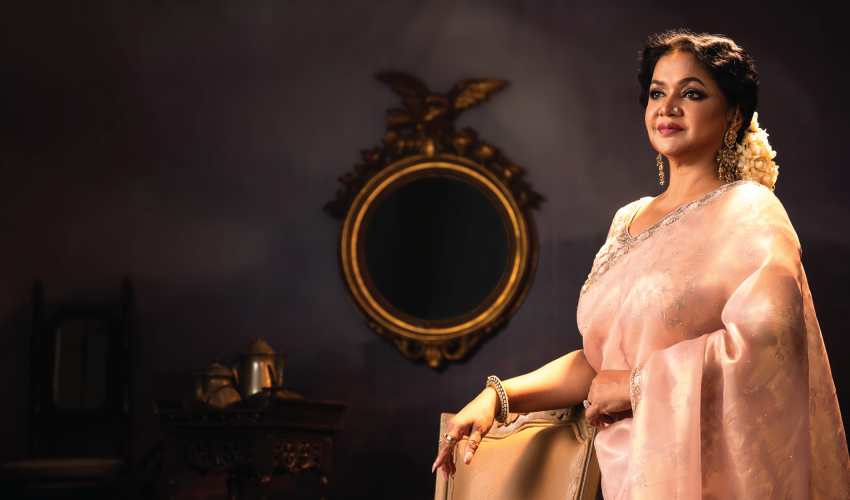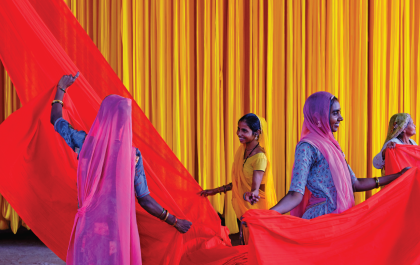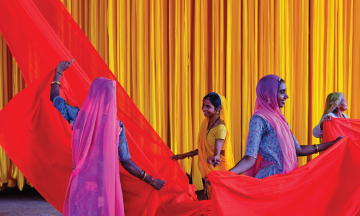Shamim Ara Nipa on dance, devotion, and discipline
By Ayman Anika
Shamim Ara Nipa doesn’t just dance – she lives it, breathes it, and quietly threads it into the cultural fabric of Bangladesh. For decades, she has moved to rhythms most of us only hear in passing – transforming stage spaces into sanctuaries and choreography into conversation.
You won’t find her seeking the spotlight, but it has always found her – drawn to the quiet power of a woman who chose grace over glamor, discipline over drama. From her early days of stadium-sized school performances to becoming one of the country’s most respected cultural figures, Nipa has never just followed the beat – she’s helped shape it.
She’s led generations of dancers through Nrityanchal Dance Company, stood firm against the tides of fleeting fame, and continues to carry forward the legacy of Bangladeshi classical and folk dance with unwavering devotion. A mentor to many and a student for life, her journey is not only about art – it’s about integrity, identity, and a relentless pursuit of depth in a world obsessed with speed.
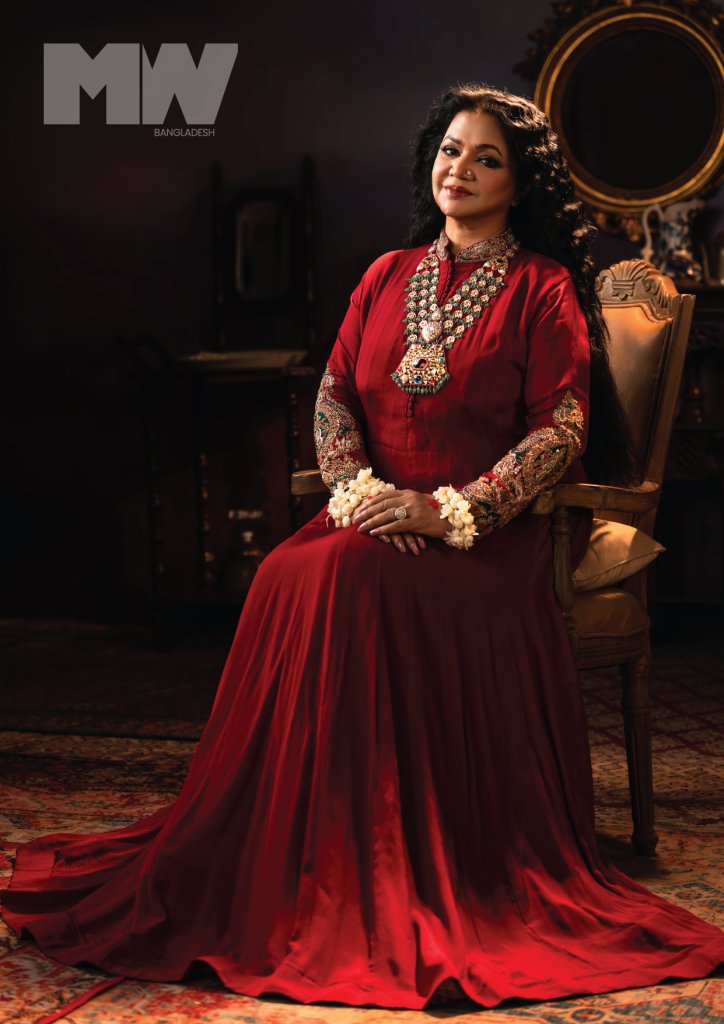
With MWB, the legendary dancer and cultural icon opens up about her extraordinary journey – a life built not on shortcuts or spectacle but on courage, conviction, and an unshakable love for the art of movement.
You began your formal training in post-independence Bangladesh. How did the socio-political atmosphere of that time shape your artistic sensibilities?
You see, I belonged to a deeply cultural family. That made all the difference. I never had to struggle with the idea of choosing the arts – it was already part of my everyday life. My elder sister used to sing. So, the house was already steeped in music and learning.
Back then, we had the Kishoreganj Arts Council – a vibrant platform where serious and dedicated training was imparted. It was more than just an extracurricular activity – it was a form of spiritual pursuit. My elder brother was an excellent organizer in Kishoreganj, and through him, we siblings were introduced to this world. It felt natural – just like studying, we would also dance, sing, or play an instrument. That was the atmosphere we grew up in.
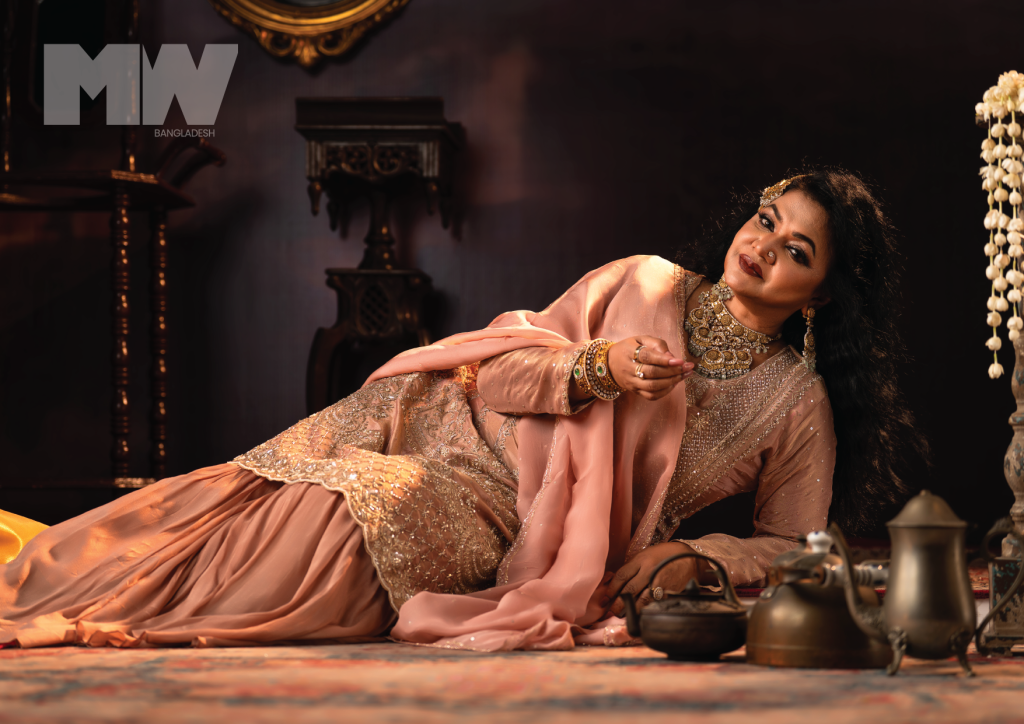
From a young age, I was involved in regular programs organized by the Arts Council. My childhood was mostly spent outside of Dhaka, in Kishoreganj, and yet we were fortunate to have such dedicated mentorship.
There were also district-level competitions in Mymensingh, where participants from various districts would gather. Kishoreganj, where I’m from, had a strong presence of Hindu families, and many of them were culturally inclined. So, it was not unusual to find talented artists in almost every household. We used to bring home most of the top prizes – first, second, third – year after year. That gave us a sense of pride and belonging.
I didn’t even realize then that I was preparing for a life in the arts. My older siblings encouraged me, and we practiced regularly, participated in competitions. Gradually, I began to understand that dance was not just a pastime – it was a path of dedication, of discipline, of sadhana. By the time I was in class 8 or 9, we were involved in a lot of stage programs and festivals. I remember we went to Dhaka from Kishoreganj for a cultural festival and performed a dance drama based on Mahua. It was through that performance that people from the Dhaka cultural scene – especially from Shilpakala Academy – took notice and selected a few of us to represent Bangladesh abroad. I was one of them.
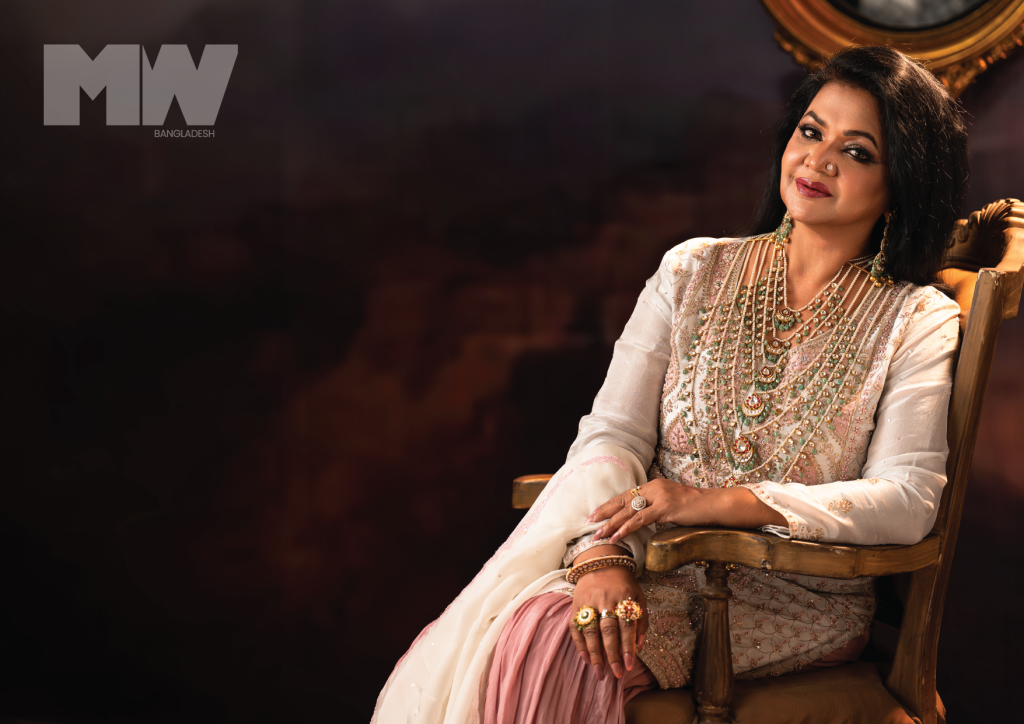
My foundational training was in Kathak. My first guru, Nikunja Bihari Pal, was a Kathak dancer himself. So, I started with him. But the other teachers we had often taught creative or folk-based forms – the most common performance pieces were built around Rabindra Sangeet, Nazrul Geeti, and folk songs. There wasn’t much scope then to perform Kathak as a standalone classical form, especially outside Dhaka. So, our performances were largely based on Tagore, Nazrul, and folk traditions, with elements drawn from classical training.
And yes, I must say – throughout my interviews, I’ve often emphasized the role of my father. That’s because, during those days, even though things were starting to change, there was still a lot of hesitation among families when it came to letting their children, especially daughters, pursue dance seriously. Most parents would say, “Okay, fine, let her dance as a hobby,” but very few saw it as a valid career path.
But my father was different. He was an incredibly open-minded, liberal man. Despite being a doctor – someone from a completely different professional background – he had a deep cultural sensitivity. Because of that, all of us siblings were encouraged to follow our passions. I realize now that, coming from a small town, to even dream of something like this was only possible because of my father.
I saw many of my classmates whose parents – either the mother or the father – would object or be skeptical about dance. But in my house, there was no such resistance. We were told to focus on our studies, yes, but also to nurture the other world – the creative world – which would shape who we are.
My father used to recite poetry himself. It was through him that I first encountered Rabindranath. Whenever poets or cultural figures came from Dhaka, they would often visit our house. That environment – that closeness with the artistic world – was something my father cultivated. And I truly believe that without his vision, we wouldn’t have dared to dream as we did.

What do you remember most vividly about your first performance that truly felt transformative for you as a dancer?
Yes, I remember it clearly – perhaps because it never actually happened. It was supposed to be my very first stage performance, during a Pohela Boishakh celebration. I was just a little girl, full of excitement after weeks of rehearsals. But on the day of the show, a violent storm swept through and destroyed the entire outdoor setup. No stage, no performance. I was heartbroken.
Maybe that’s why it stayed with me – not because it happened, but because it almost did.
After that, performing became a regular part of life. Events like Rabindra Jayanti, Nazrul Jayanti, and Pohela Boishakh were annual rituals, and I was always involved – often taking on big responsibilities even as a child. I didn’t know what “choreography” meant, but I was choreographing anyway – sometimes directing 50 or 60 students in school displays and stadium performances.

Older students would follow my lead, and without realizing it, I was learning how to take charge, how to create, how to lead. Looking back, those school experiences laid the foundation for the confidence and initiative I carry with me today.
So yes, while my first performance never happened, it quietly began a journey that shaped everything that followed.
You’ve trained under masters from Bangladesh and China – how did each school of thought influence your own creative vocabulary?
Yes, I’ve had the privilege of training under several gurus in Bangladesh and abroad, including in China. Each brought a distinct philosophy that helped shape my own creative language. But beyond formal training, I’ve always believed in two kinds of learning: one structured, like a syllabus, and the other internal – rooted in constant observation and reflection.
To me, my eyes have been my greatest teachers. I’ve always watched closely – what moves me, what doesn’t, and why. Technique alone isn’t enough; it’s the inner spark, the ability to break and rebuild yourself, that breathes life into dance.
When I teach, I encourage students to go beyond imitation. Add your own voice, your own reflection. Sometimes one student out of ten will interpret a movement in a way that surprises even me – and that’s when I know they’re truly creating.
Of course, part of it is a gift. Not everyone with training becomes a dancer, and sometimes those with little formal instruction leave the deepest impact. That’s why I believe artistry, especially in the cultural space, carries a touch of divine grace.

So while I owe much to my gurus, my journey has been equally shaped by a constant desire to observe, question, and evolve – always asking: How can I take this further and make it my own?
You’ve worked across folk, classical, and modern forms. How do you personally define the “soul” of Bangladeshi dance?
You’re right – I’ve had the opportunity to explore a wide spectrum of forms: folk, classical, and modern or contemporary styles. But when you ask about the soul of Bangladeshi dance, I think it lies in something deeper than just technique or form. To me, it’s rooted in something innate – something organic that lives in our dancers, our people, our soil.
What I’ve cherished and tried to nurture throughout my journey is a certain natural simplicity or ease that I believe is inherent in Bangladeshi performers. If I focus too much on just the technical aspects of a dance form, if that becomes the sole priority, it can start to feel monotonous after a point. Technique is important, yes – but not at the cost of emotional and aesthetic richness.

I truly believe in the power of simplicity, aesthetics, and soulfulness. When an artist carries these qualities, their work resonates deeply – not only with local audiences but also across borders. And I’ve observed that those who have become truly respected and well-loved in our cultural scene, in whatever capacity, have embodied these values. They present themselves with grace – not just in movement but in personality, in behavior, in humility.
You cannot, in my opinion, separate the artist from the human being. Being a good dancer isn’t only about what happens on stage. It’s also about how you carry yourself off stage – your demeanor, your attire, the way you speak, the way you treat people. True artistry comes from a wholeness, a harmony between form and life. In Bangladesh, I’ve seen many artists – even those from small towns or modest backgrounds – possess this quality in abundance. And I believe that’s our greatest strength.
Throughout my career, I’ve represented Bangladesh in countless international festivals. I’ve performed abroad, I’ve welcomed foreign delegates here. Often, before a performance, I’d wonder – how do I present our culture to countries like India or China? Will we measure up? But every time, I’ve witnessed something profound – it’s our simplicity, our vibrant spirit, our earthy aesthetics that touch people the most.
There’s something very colorful about us – not just visually, but emotionally. The colors we wear, the way we move, the maya – that deep sense of emotional resonance – it connects with people. I’ve never experienced our culture being neglected or overlooked abroad. In fact, we’ve always been warmly received and remembered.
Yes, we may not always have the same level of technical precision – in lighting, sound, or elaborate stagecraft – as some other countries. But what we bring to the table is a unique emotional landscape, a tenderness, a connection to the land and to our people. That, to me, is the essence – the atma – of Bangladeshi dance.
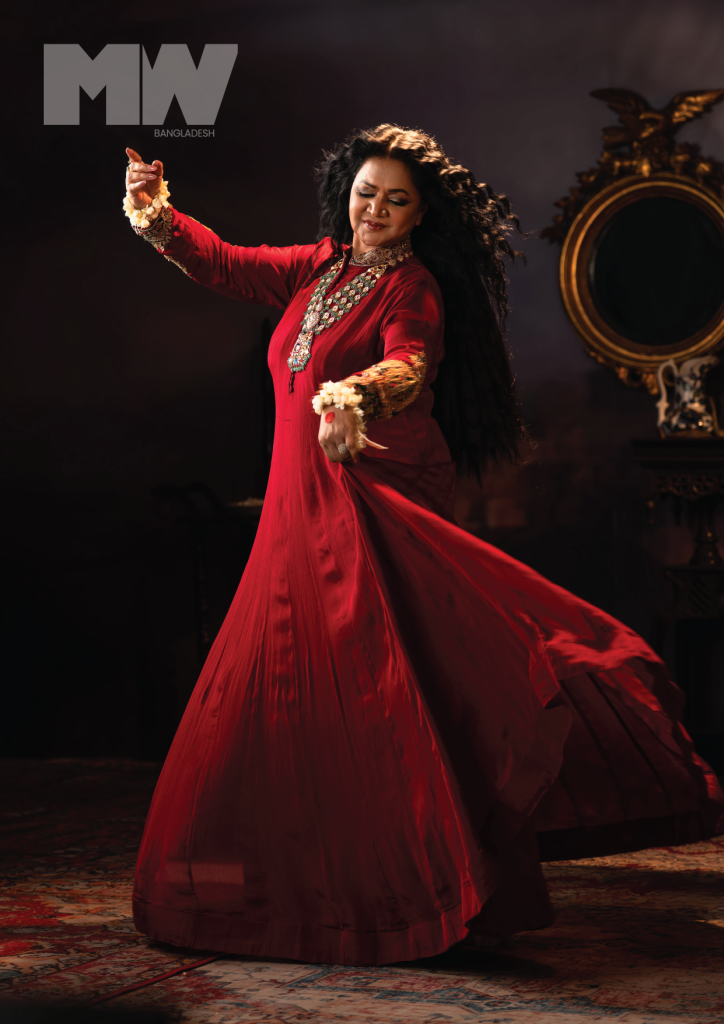
Do you think Bangladeshi dance has been sufficiently represented on international stages – and if not, what’s missing?
I’ve been fortunate that my work has allowed me to travel extensively for performances. I’ve had the opportunity to represent Bangladesh in various countries, sometimes visiting the same place more than once. Unlike travelling for leisure, these were journeys rooted in purpose: to perform, to share, and to learn.
One particularly formative experience was my time in China, where I received training.
What struck me most was the depth of seriousness and dedication ingrained in their system. From a very young age, children in China – and similarly in Russia – are encouraged to make firm decisions about their passion. If a child is good at something, they are guided, supported, and trained to pursue it with utmost dedication. And they do – they pursue their art to an extreme level of excellence.
We, on the other hand, often lack that infrastructure. Many of our students begin with great enthusiasm, but when academic pressure increases or life circumstances change, they slowly drift away. The years of effort, practice, and dedication don’t always lead to fulfilment. It gets lost. And that’s one of the biggest challenges we face – the absence of long-term planning and support for artists from the school level.
In countries like China or Russia, there’s a clear system. If a child shows promise in dance or any art form, they are selected early, their academic pressure is adjusted, and their training is streamlined toward mastery. That level of seriousness and professional nurturing is still missing in Bangladesh.
Most of our artists today, unfortunately, remain hobbyists. Dance is something many pursue out of passion, but very few are able to sustain it as a lifelong discipline. We need to move beyond passion alone – we need a structure where passion is met with perseverance, practice, and institutional support. Otherwise, it fades.
What I also observed abroad is a deep sincerity toward the arts. In Japan, in China, or elsewhere – they take the arts very seriously. It’s not seen as something casual. For them, it’s a job, an identity, a national representation. And those in leadership positions – their selection committees – they understand the difference between first-grade artists and others. That level of professionalism still eludes us.
In Bangladesh, unfortunately, favoritism often overrides merit. Selection processes are influenced by personal connections – “He’s my friend, he’s my relative, she’s from our group” – these attitudes are still prevalent. And that’s heartbreaking. If someone is at the top of their form, they should be chosen again and again. If not, they should not be. It’s that simple.
I’ve personally faced criticism and yes, it hurt sometimes. But at the end of the day, I was simply doing my work with sincerity, and perhaps that’s why I kept getting chosen. Still, I’ve always believed that those in charge of selecting performers for international platforms must remember – they are not just picking someone to perform. They are selecting someone to represent an entire country. And that responsibility demands objectivity and integrity.
We must send our best. It doesn’t matter if they are our friends, family, or political associates. The only criteria should be: Are they the best artist at the moment? That’s the standard in most other countries, and we are far behind in that regard.
It’s deeply painful to see so many talented artists, especially the more introverted or humble ones, who never receive the opportunities they deserve – simply because they don’t ask or lobby for them. I, too, never asked – I was lucky to have been chosen. But not everyone is as fortunate.
There are brilliant artists in our country, but as a system, we have failed to give them the platform they need. That, to me, is one of our greatest shortcomings. And I honestly don’t know when – or if – this mindset will change.
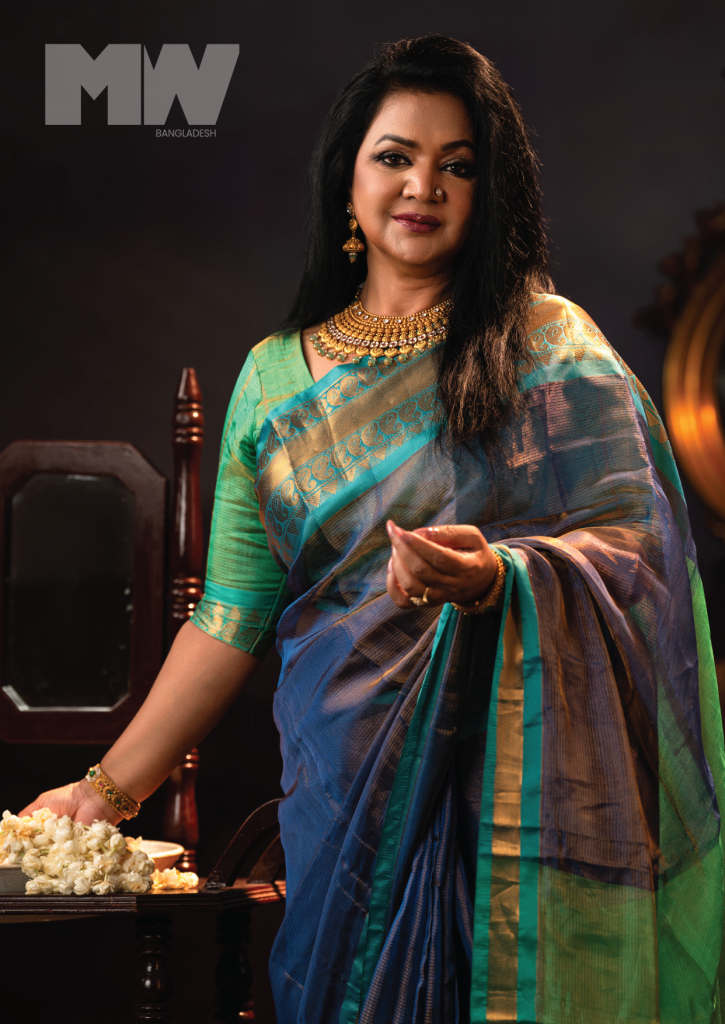
You’ve nurtured generations of dancers through Nrityanchal. What qualities do you look for in a student beyond technique?
That’s a very important question – and one that goes far beyond technique. When I look at a student, I first look for an open mind. In the world of dance, jealousy and unhealthy competition often creep in – why is she in the front row, why not me? But I value sincerity over showmanship. The students who quietly dedicate themselves to the practice, without seeking quick recognition, are the ones who truly leave an impression on me.
Some children are immersed in the sadhana of dance. They don’t ask about TV performances or stage time – they dance because it brings them joy. With them, I feel inspired to give more. I always tell my students: if you stay true to the art, people will eventually notice. But if you’re only chasing fame, the purity gets lost.
I’ve been deeply influenced by my mentor, Mustafa Monwar, who taught me that you must first stir your own soul to move others. That’s a principle I carry into both my teaching and my own practice.
These days, I see a restlessness – especially in younger dancers who want instant results. But art is a lifelong journey. The ones who stay grounded, who grow slowly with integrity and discipline, are the ones who truly last.
And yes, this path is especially challenging for women. There’s judgment, there are limitations. But I’ve always believed that self-respect and purpose matter more than short-lived opportunities.
Beyond my teaching, I’m also researching and working diligently on Bangladeshi folk dance, especially through my organization. It’s my way of preserving and passing on the richness of our cultural heritage – not just as performance but as philosophy and lived experience.
So, when I look at a student, I look for honesty, humility, and that inner joy. Because those qualities don’t just make good dancers – they make lasting artists.
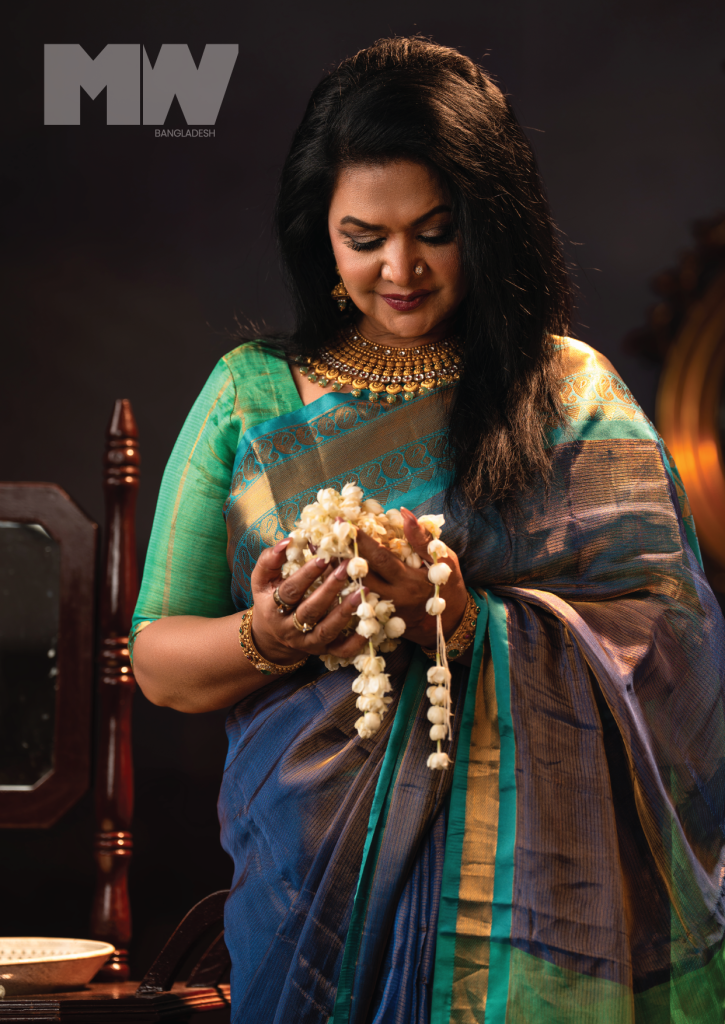
You and Shibli Mohammad have been creative partners for decades. How has the dance magazine program “Tarana” on BTV helped shape how audiences understand your bond –not just as artists but as cultural thinkers?
My journey with Shibli has been a long and meaningful one – one built not just on shared performances but shared vision and trust. When I began working in this field, Shibli hadn’t yet entered it fully. I was quite young but had already started gaining recognition – some would even say I had received much early on.
But for me, receiving that appreciation meant I had to work even harder. I was terrified of disappointing those who believed in me. So, I gave everything – body and soul – to my work, with the utmost sincerity.
When Shibli returned from his studies in Delhi and entered the dance scene, I was already looking for male dance partners – there were very few at the time who could match the intensity and commitment I sought. I had always been hungry – not for popularity, but for excellence. I wanted to go beyond superficial glamor and applause; I wanted to create meaningful work.
I remember clearly – we first danced together in a BTV performance. The piece was Tarana, a Kathak dance performance. The moment I saw him, I sensed his speed, his sharpness – it immediately clicked. That performance changed everything. After that, I didn’t have to explain to anyone who he was or why I wanted to work with him. The audience, organizers, and even our seniors instantly accepted him. Our chemistry spoke for itself.
That single televised performance – Tarana – helped define us not just as individual dancers but as a duo. It made people see that we were more than performers – we were collaborators who shared a cultural language. Slowly, we became inseparable on stage. If someone invited me to perform, they expected Shibli to be there. And vice versa. We weren’t just doing solos or duets anymore – we began imagining larger, group-based choreographies. I had some training in choreography and that naturally aligned with Shibli’s own evolving ideas. Together, we began building something bigger.
That vision led to the creation of our school, Nrityanchal. Initially, we were just forming a group – training students, performing together. But we realized we needed a deeper, structured space for learning. Something beyond rehearsals. Something that could carry forward a philosophy, a style, a culture.

Interestingly, the idea for formalizing our school came during an international tour. Shibli and I had gone to Italy to perform at an event where Dr Muhammad Yunus was receiving an award. After our performance, while driving between cities, Dr. Yunus told us, “Why don’t you two start a school? Who will carry forward what you’re doing? Your generation must leave something behind.” That moment stayed with us.
His younger brother, journalist Muhammad Jahangir, who was traveling with us, encouraged us further. And so, in 2000, we formally launched Nrityanchal Dance Company – with the three of us at the heart of it. From then on, we weren’t just dancers. We became mentors, institution-builders, and dreamers for the next generation.
From just being performers on stage, we became something like parents to our students. They became like our children. And that bond – between me and Shibli – also evolved. At this point, I don’t even see him as a separate entity. He is like a part of my own existence. Just like my hands or my voice, he’s part of the rhythm that moves through me. And I know he feels the same.
Tarana was just the beginning. But what it did was monumental – it allowed audiences to witness our chemistry, our shared sense of aesthetics, and our hunger to create something beyond ourselves. It showed that we weren’t just dancing – we were thinking, building, and nurturing together.
And today, in an increasingly chaotic and fast-paced world, I find peace in knowing that what we’ve created – through our bond, our institution, and our legacy – still stands for something real, something rooted, and something deeply Bangladeshi.

Young dancers today often seek quick recognition through social media. What would you say to them about the value of patience and deep practice?
In today’s world of quick social media fame, I want young dancers to remember – true dance isn’t about instant visibility; it’s about lasting impact. Glamorous moves might catch the eye, but without practice, thought, and sadhana, they rarely touch the heart.
Real artistry takes time. Respect the craft, invest in deep practice, and let your dance reflect your soul – not just your style. The goal isn’t just to be seen but to be remembered.
So, my message to the younger generation is this: let your dance not only catch the eye but also stir the heart. Don’t lose yourself in the rush. Take your time. Build your foundation. And remember, even in today’s fast-paced world, what’s deeply felt and beautifully crafted will always stand the test of time.
What is your biggest hope for the future of Bangladeshi dance?
I truly believe Bangladeshi dance holds immense potential. My biggest hope is for the creation of proper platforms that nurture and showcase real talent – not just in Dhaka but across the country. We have so many young, promising choreographers and dancers, but without exposure and institutional support, they often remain unseen.
If we, as a community – from government to media to cultural bodies – work together to identify and uplift these artists, we can build a strong, vibrant dance culture. Each dancer is a national asset. When they perform with sincerity, they’re not just entertaining – they’re contributing to our cultural identity.
I hope that we stop treating dance as a personal pursuit and start seeing it as a shared national responsibility. Only then can the future of Bangladeshi dance truly flourish.
Fashion Direction & Styling: Mahmudul Hasan Mukul | Photographer: Rono Zaman
Make-up & Hair Style: Parvez Ahmed | Assistant Stylist: Arbin Topu | Jewelry: Jarwa House




